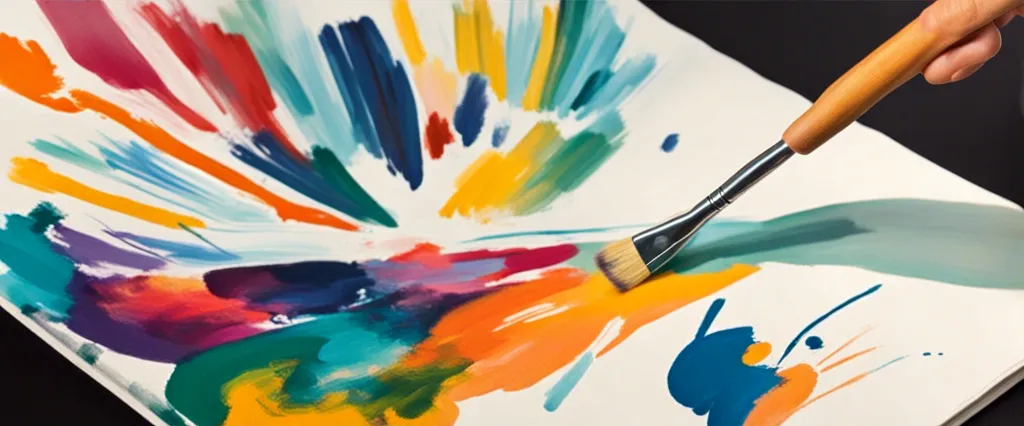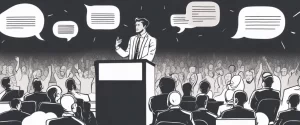
In the ever-evolving landscape of creative writing, numerous books have emerged, each claiming to hold the key to unlocking our potential as storytellers. Two such influential works are “The Artist’s Way” by Julia Cameron and “Wired For Story” by Lisa Cron. These books delve into the depths of the creative process, offering unique insights and techniques for nurturing and enhancing our ability to craft compelling narratives. While both books share a common goal of empowering writers, they approach this objective from distinct perspectives.
The Artist’s Way” serves as a cherished guidebook for many artists and writers. Julia Cameron, an accomplished novelist and playwright, presents a holistic approach to unblocking creativity and fostering personal growth. Central to her method is the concept of “morning pages” – a daily practice of stream-of-consciousness writing to clear out mental clutter and tap into our creative reservoir. Furthermore, Cameron explores the notion of “artist dates,” advocating for regular solo excursions to stimulate our senses and replenish our imaginative wellspring. Alongside these exercises, she encourages readers to embrace self-compassion and banish the inner critic that often stifles our creative endeavors. By nurturing our inner artist-child, Cameron believes we can reclaim our innate creativity and overcome the blocks that impede our artistic expression.
Lisa Cron’s “Wired For Story” takes a different approach to understanding the craft of storytelling, focusing on the intersection between neuroscience and narrative. As a renowned story consultant, Cron asserts that human brains are hardwired to seek out stories, making storytelling a fundamental aspect of our existence. Drawing upon scientific research, Cron examines how our brains process and respond to narrative, unraveling the intricate mechanisms that captivate our attention and evoke deep emotional engagement. By unraveling the secrets behind effective storytelling, countless psychological insights are unveiled, inviting writers to harness readers’ cognitive processes to create narratives that resonate on a primal level. Cron intertwines theory with practical advice, offering a roadmap for constructing compelling stories rooted in our neurological predispositions.
While both Julia Cameron and Lisa Cron offer guidance to writers, their perspectives diverge in striking ways. Cameron’s “The Artist’s Way” emphasizes personal growth, urging readers to cultivate a nurturing environment to unleash their creative potential. In contrast, Cron’s “Wired For Story” explores the scientific foundations of storytelling, urging writers to tap into the innate tendencies of our brains to create narratives that captivate and resonate universally. By comparing and contrasting these two influential works, we aim to explore the diverse approaches to storytelling, analyzing the underlying principles and techniques to help aspiring writers navigate the labyrinth of creativity. Through this comparative study, we seek to understand how these distinct perspectives can be integrated into our own creative process, ultimately unlocking our individual artistic prowess.
Brief Summary of Two Books
The Artist’s Way by Julia Cameron
“The Artist’s Way” by Julia Cameron is a self-help book designed to help individuals tap into their creativity and overcome creative blocks. It presents a twelve-week program which combines various exercises and techniques to unleash the artistic potential within. The author emphasizes the concept of “morning pages,” which involves writing three pages of stream-of-consciousness thoughts every morning to clear the mind and boost creativity. She also introduces the concept of “artist dates” as a way to nurture the inner artist and explore new experiences. Through this practical guide, Cameron aims to guide readers in discovering their authentic creative selves and living a more fulfilling creative life.
Wired For Story by Lisa Cron
“Wired for Story” by Lisa Cron is a non-fiction book that explores the science and art of storytelling. The book presents a fresh approach to understanding and crafting compelling stories by delving into the neuroscience behind storytelling. Cron argues that human brains are wired to respond to stories and that understanding this innate wiring can help writers create more engaging narratives.
The author emphasizes the importance of understanding the core elements of storytelling, such as the protagonist’s desire, goal, and obstacle. Cron also highlights the significance of emotions in storytelling, emphasizing that the raw, authentic emotional experiences in a story are what connect readers to the characters and keep them engaged.
Throughout the book, Cron provides practical advice and techniques for writers to create captivating stories. She explores concepts like the importance of maintaining suspense, the power of inner motivation for characters, and the role of the protagonist’s arc in creating a satisfying narrative.
Cron also debunks common myths about storytelling, challenging the idea that a plot solely drives a good story. Instead, she argues that the emotional journey of the characters and the readers’ connection to them are the driving forces of a compelling narrative.
With a blend of scientific research and storytelling wisdom, “Wired for Story” offers writers valuable insights into the art of crafting unforgettable tales. The book ultimately aims to empower writers to create stories that resonate deeply with readers by tapping into the innate connection between our brains and the narratives they crave.
Comparison between Two Books

Similarities in Creativity
“The Artist’s Way” by Julia Cameron and “Wired For Story” by Lisa Cron both explore the theme of creativity by providing insights and techniques for harnessing and enhancing creative abilities. Here are some similarities between the two books regarding creativity:
1. Emphasizing the importance of daily practice: Both books stress the significance of consistently engaging in creative activities. Cameron suggests the use of “Morning Pages,” where the act of writing three pages every morning helps clear mental clutter and taps into the creative wellspring. Similarly, Cron emphasizes the role of regular writing practice in honing storytelling skills and developing a creative mindset.
2. Recognizing the power of storytelling: Both books acknowledge the transformative power of storytelling. Cameron delves into the concept of “creative recovery” and highlights how writing and artistic expression allow individuals to reclaim their true selves. Cron, on the other hand, focuses on the neurological impacts storytelling has on the human brain and how it relates to engaging and captivating an audience.
3. Tapping into the subconscious: Both Cameron and Cron emphasize the significance of accessing the subconscious mind to unlock creativity. Cameron introduces the concept of synchronicity, encouraging artists to pay attention to connections and signs that arise from the universe, often leading to unexpected creative insights. Cron highlights the role of the brain’s unconscious processing in storytelling, encouraging writers to trust their intuition and allow their subconscious to shape their narratives.
4. Dealing with creative blocks: Both books address the challenges creators face and offer guidance on overcoming creative blocks. Cameron introduces various exercises, such as artist dates and removing “creative monsters,” to help identify and eliminate obstacles. Similarly, Cron provides techniques for getting to the core of a storytelling problem and suggests ways to work through writer’s block.
5. Nurturing creativity through self-care: Both books underscore the importance of self-care and personal well-being in supporting creativity. Cameron emphasizes the need for self-reflection, self-compassion, and self-love, all of which create a fertile ground for creative exploration. Similarly, Cron highlights the role of emotions in storytelling, urging writers to take care of themselves mentally and emotionally to fuel their creative process.
In summary, both “The Artist’s Way” and “Wired For Story” acknowledge the significance of daily creative practice, recognize the power of storytelling, suggest tapping into the subconscious, address creative blocks, and emphasize the importance of self-care in nurturing creativity.
Divergences in Creativity
The Artist’s Way by Julia Cameron and Wired For Story by Lisa Cron are both highly regarded books that delve into the creative process. While they share a common goal of nurturing creative expression, there are notable divergences in how they approach and explore the concept of creativity.
1. Approach to Creativity:
– The Artist’s Way: Julia Cameron adopts a more spiritual and introspective approach to creativity. She emphasizes the importance of connecting with a higher power, which she refers to as the “creative force” or “creative energy.” The book incorporates practices such as morning pages and artist dates to tap into this higher power and unearth one’s creativity.
– Wired For Story: Lisa Cron, on the other hand, takes a more scientific approach to creativity. She delves into the brain’s storytelling instincts, discussing how storytelling is wired into human nature and why it captivates us. Cron focuses on understanding the cognitive processes behind storytelling and how to effectively engage readers by leveraging these natural instincts.
2. Focus:
– The Artist’s Way: Julia Cameron’s book is not solely centered on writing or any specific art form. It aims to unlock creativity in individuals of all artistic backgrounds or those seeking personal growth. Cameron encourages exploring various creative outlets such as drawing, painting, dancing, and music, making it a comprehensive guide to creativity across different domains.
– Wired For Story: Lisa Cron’s book, as the title suggests, predominantly concentrates on the art of storytelling. She breaks down the elements of compelling narratives and offers advice on structuring stories, developing characters, and taking readers on an emotional journey. While the focus is on writing, the principles shared can be applied to other forms of storytelling such as film, theater, or even marketing.
3. Practice vs. Theory:
– The Artist’s Way: Julia Cameron’s book is highly practical and hands-on. It provides readers with a twelve-week program designed to unblock creativity through various exercises and activities. Cameron encourages readers to engage in daily writing, reflection, and experimenting with different artistic mediums. It aims to help individuals develop a consistent creative practice.
– Wired For Story: Lisa Cron’s book is more theoretical in nature, dissecting the psychology behind storytelling and offering insights into the cognitive processes at play. Cron emphasizes the importance of understanding the audience’s expectations and desires to create engaging narratives. Although she provides numerous examples and case studies, the book focuses more on the underlying principles rather than offering specific exercises or practices.
Overall, while both The Artist’s Way and Wired For Story foster creativity, their divergence lies in their approaches. The Artist’s Way targets a broader audience, emphasizing self-reflection, spiritual connection, and a diverse range of creative outlets. In contrast, Wired For Story zooms in on storytelling, scientifically dissecting the elements that captivate audiences. Both books offer valuable perspectives on creativity, catering to different needs and interests of individuals seeking to nurture and harness their creative potential.

Conclusion
Both The Artist’s Way by Julia Cameron and Wired For Story by Lisa Cron are highly regarded books in their respective fields. Choosing one over the other depends on your specific interests and goals.
The Artist’s Way focuses on nurturing creativity and overcoming creative blocks. Julia Cameron presents a twelve-week program designed to assist individuals in rediscovering their artistic selves. With a combination of practical exercises and spiritual concepts, this book has garnered a strong following among artists and writers.
On the other hand, Wired For Story explores the science behind effective storytelling. Lisa Cron delves into cognitive psychology and neuroscience to uncover what makes a story captivating and engaging. This book provides valuable insights and techniques for anyone interested in crafting compelling narratives, regardless of the medium.
Ultimately, the better choice depends on your priorities. If you are primarily focused on personal growth, creatively unblocking yourself, and exploring your artistic potential, The Artist’s Way may be the more suitable option. However, if you are primarily interested in understanding storytelling from a psychological perspective and enhancing your storytelling skills, Wired For Story may be the more advantageous choice.
Consider your personal goals and preferences when making a decision, and remember that both books have received positive reviews and have helped many readers in their creative journeys.

